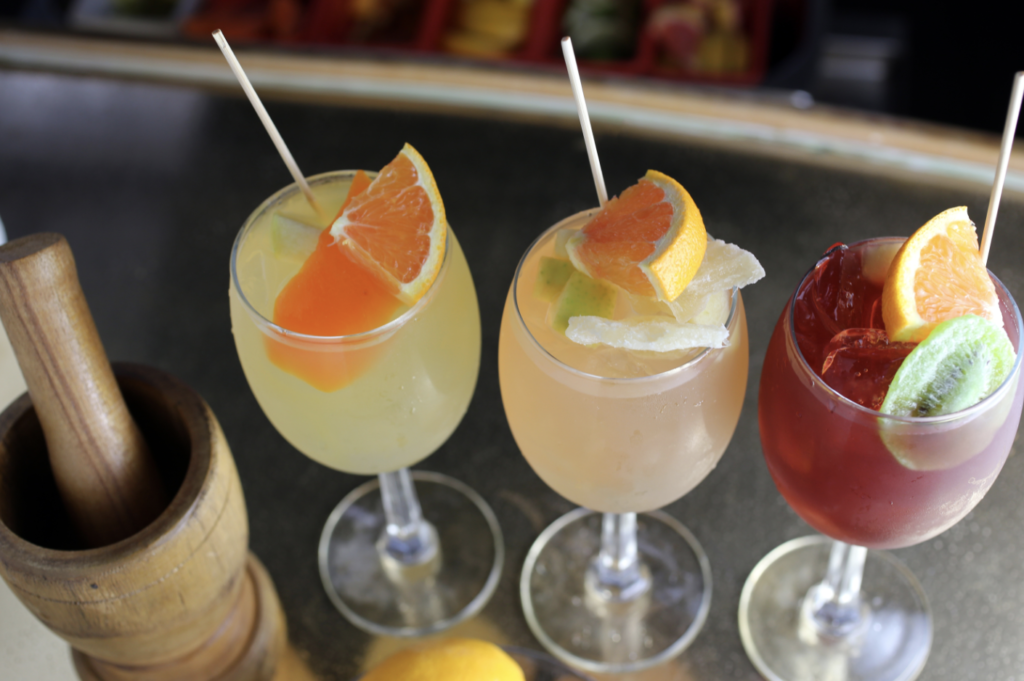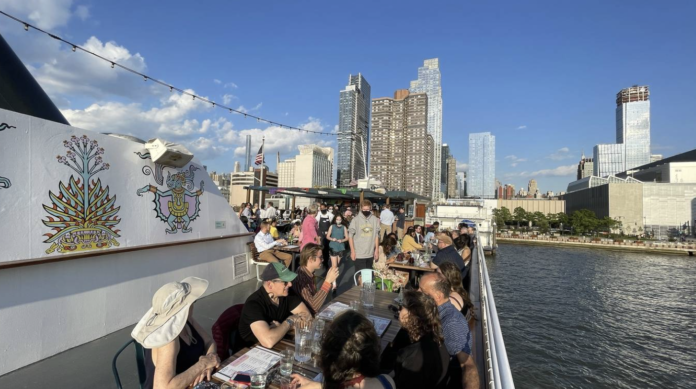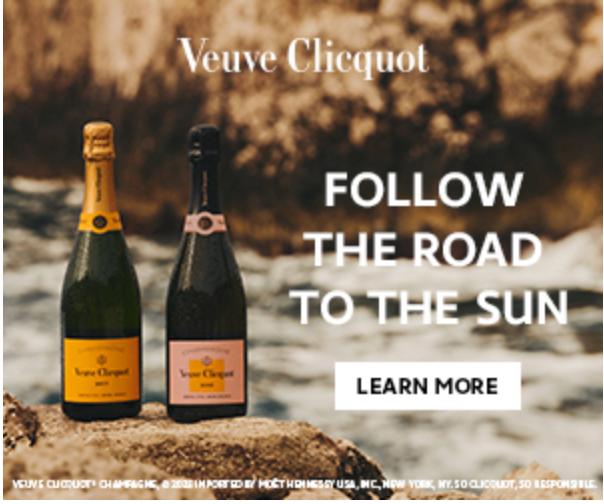Get a taste of La Barca Cantina, NYC’s floating Mexican restaurant on the Hudson River
On May 4, La Barca Cantina, NYC’s only Mexican restaurant on a boat, re-opens to the public with a summer street food-inspired menu for you and your friends all summer-long.
Taste through the yummy flavors – refreshing agave-based spirits and tasty tacos served onboard the three-story boat in the Hudson River.
La Barca Cantina’s boat embarks at Pier 81, next to its sister-restaurant North River Lobster Company.
La Barca Cantina’s layout
La Barca spans three levels with a spacious outdoor top deck that has a bar and table seating, a bi-level interior space with two bars, table seating and booth-like tables — large groups are welcome.
La Barca Cantina’s cruise offers stunning NYC views
The floating restaurant takes short cruises multiple times per day, five days a week, offering up sweeping views of the NYC skyline. Imagine cocktails at sunset with that view.

The cocktail menu, created by Craig Kanarick and Wesley Rincon, the beverage director for New York Cruise Lines, features agave-based spirits, such as mezcal, tequila, sotol and racilla, with a diverse bottle list and flights for sampling.
Most cocktails can be served in large format to be shared among couples or groups.
The menu is full of crowd-pleaser items like tacos, the grouper ceviche, the four-cheese quesadilla or a “Fiesta Platter,” which comes in two options: the Pollo Barca Fiesta (Mexican-spiced fried whole chicken, chorizo empanadas, chops, yuca fries, jalapenos, onion rings and salsas served on a little boat) and the Tower of Tacos Fiesta.
You can add a margarita pitch for $50.
La Barca Cantina, located at Pier 81 at 41st Street and 12th Avenue will be open five days a week, Thursday through Sunday. It sets sail Thursdays and Fridays at 4, 6 and 8pm; Saturday at 2, 4, 6 and 8pm; and Sunday at 12:30 to 2:30pm for brunch with regular dinner sails from 6 to 8pm.
Tickets go on sale on April 3.



